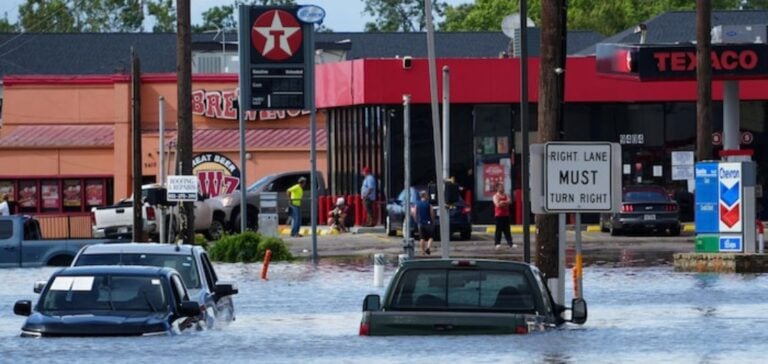Storm Beryl, after crossing the Caribbean, reached Texas on Monday, bringing torrential rains that caused massive flooding and power outages. At least five people died in the southern United States as a result of the storm. Four deaths were reported in the Houston area, including a city police employee trapped in floodwaters on his way to work. Another death resulted from a fire caused by lightning.
Further north, in Benton County, Louisiana, a woman was killed when a tree fell on her house, according to local police. Beryl, initially classified as a hurricane, had already claimed the lives of at least 10 people in the Caribbean and Venezuela before reaching the United States. During its passage through the West Indies, it reached category 5 on the Saffir-Simpson scale, the highest.
Damage and forecasts
Downgraded to a tropical storm, Beryl continues to present significant hazards. The weather service recorded five tornadoes in Texas and warned of the risk of coastal flooding. In Houston, uprooted trees and power poles blocked roads, and several lanes were flooded. “For a Category 1 storm, the damage is significant, much more than we expected,” said Houston resident Rose Michalec. The fence on his house, and those of his neighbors, was blown off by the gusts of wind.
Floyd Robinson, 76, lamented the rarity of a storm of this magnitude so early in the season, observing the damage in a downtown park, partly engulfed by the waters. More than 2.4 million homes and businesses in Texas are without power, according to poweroutage.us, and evacuations have been necessary. Houston’s main airport canceled more than 1,100 flights on Monday, according to FlightAware, due to tornadoes feared by the U.S. Hurricane Center (NHC).
Safety measures and outlook
Acting Texas Governor Dan Patrick urged Texans to remain vigilant, follow instructions from local authorities and leave dangerous areas if possible. “This storm will be deadly for those directly in its path,” he warned at a press conference. The White House said it was monitoring the situation closely.
According to the NHC, Beryl is expected to move eastward into Texas on Monday, then into Mississippi and Ohio on Tuesday and Wednesday. A steady weakening is forecast over the next few hours, according to their latest bulletin. It’s extremely rare for a hurricane of this power to strike so early in the season. Beryl is the earliest to hit the US in 10 years, according to hurricane expert Michael Lowry.
Scientists believe that climate change, by warming ocean waters, is encouraging the rapid intensification of storms and increasing the risk of more powerful hurricanes. This trend is particularly worrying, as it could mean more frequent and devastating weather events in the future.






















